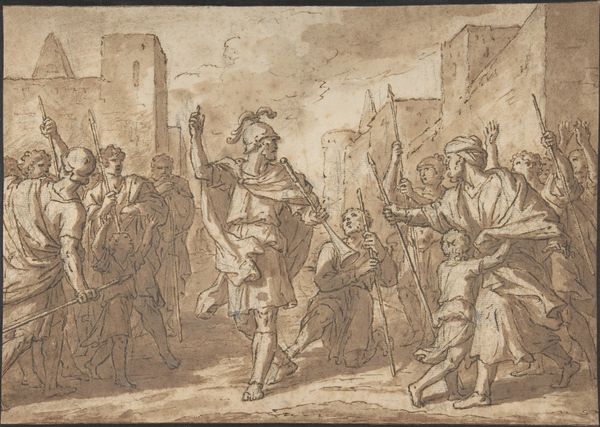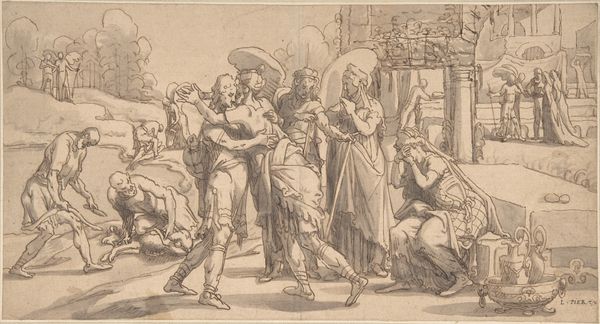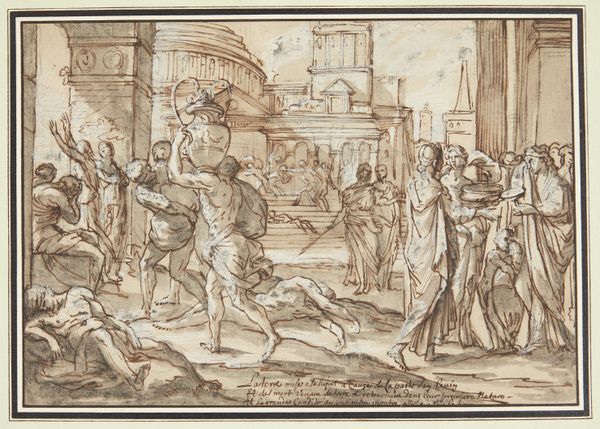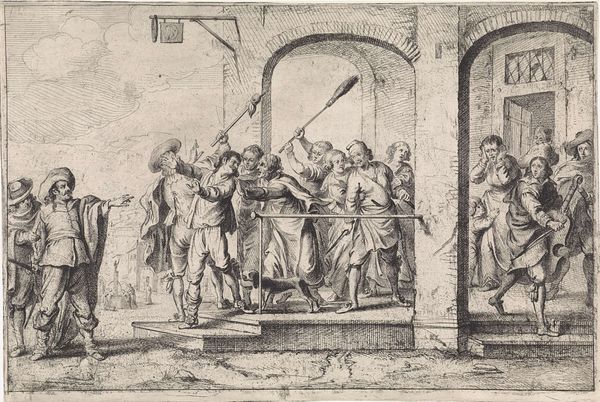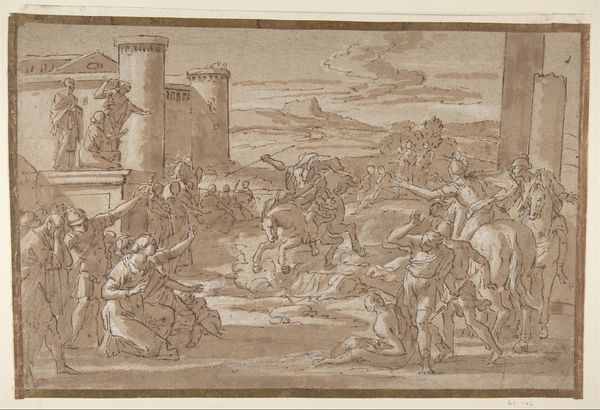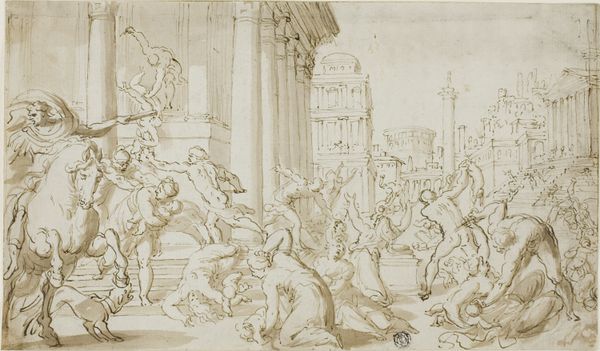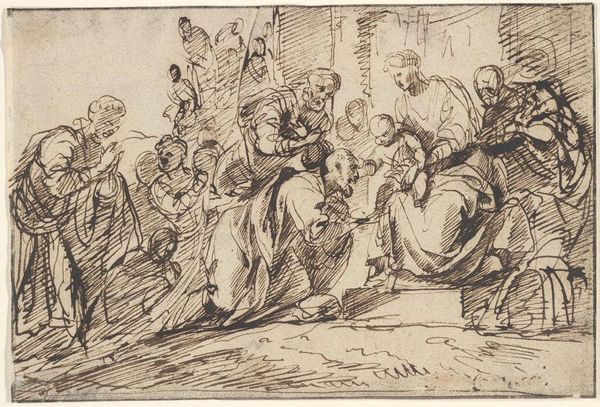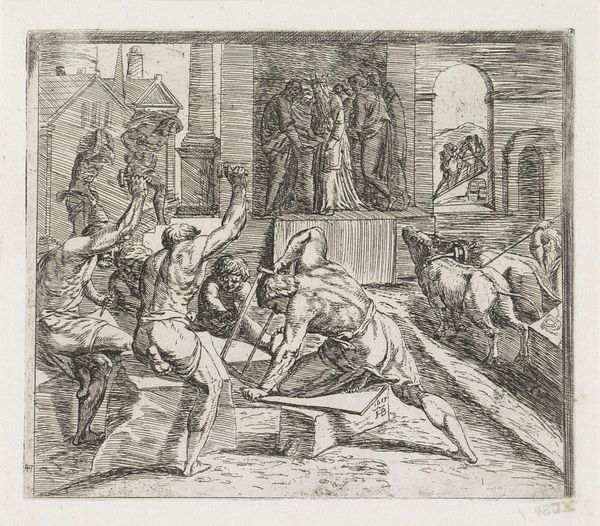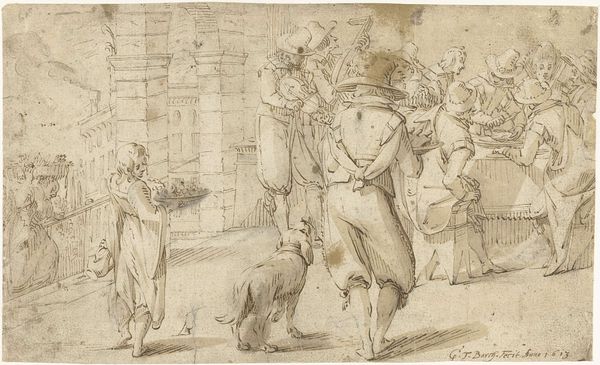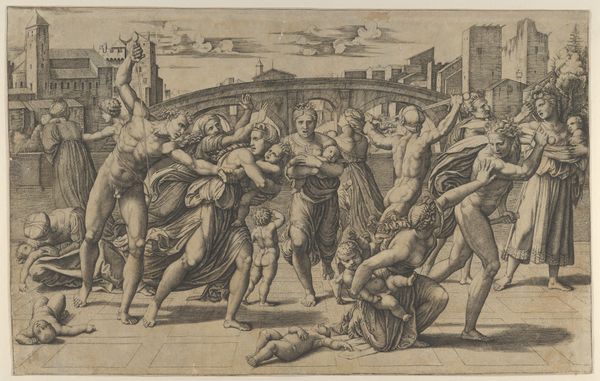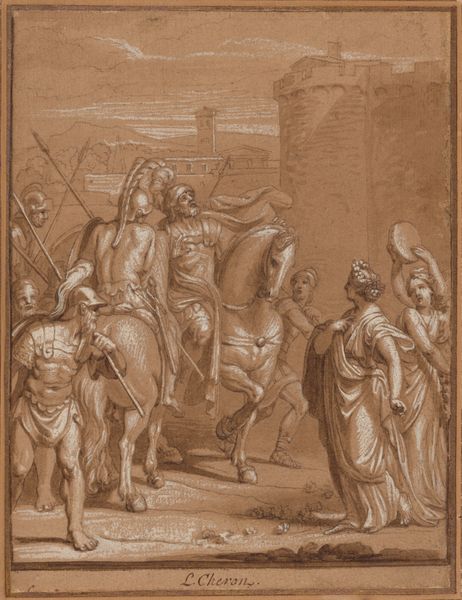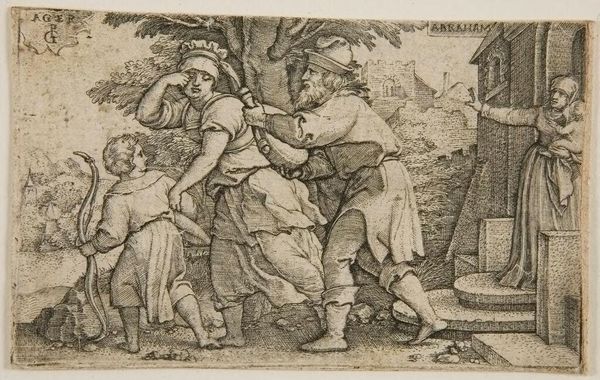
The Lupercalian Festival in Rome. Cupid and Personifications of Fertility Encounter the Luperci Dressed as Dogs
0:00
0:00
drawing, paper, ink
#
drawing
#
narrative-art
#
figuration
#
paper
#
romanesque
#
ink
#
line
#
history-painting
#
academic-art
Copyright: Public domain
Editor: We're looking at "The Lupercalian Festival in Rome. Cupid and Personifications of Fertility Encounter the Luperci Dressed as Dogs" by Adam Elsheimer, executed in ink on paper. It's a pretty dynamic scene. I'm immediately drawn to the contrast between the frenzied figures on the right and the more composed group on the left. What are your thoughts? Curator: The immediate impact stems from Elsheimer's skilled manipulation of line. Note how the energetic, almost chaotic, lines describing the Luperci contrast sharply with the more deliberate, flowing lines used to depict the figures of fertility. Observe the use of hatching and cross-hatching: denser in the shadowed areas, giving weight and volume. And where does your eye go first? Editor: I think I noticed the contrast, and then the diagonals of the figures pull my attention around the page, particularly following the torch up to the building in the background. Does that direction matter? Curator: Indeed. Consider how Elsheimer employs these diagonals to create a sense of spatial depth, leading the eye from the foreground figures to the architectural backdrop. Also consider, is the structure actually a portal to someplace different? It divides the drawing into halves that explore different states of activity. Does that contrast also underscore some kind of union? Editor: I suppose, a dynamic movement colliding with... stately fertility? Curator: Precisely. Note also the placement of Cupid, bridging these two realms, and how that relates to a reading of unity. It's a fascinating study in contrasts and visual rhythm. Ultimately it is the line work in relation with its subjects that captures meaning, isn't it? Editor: I can see that now; thanks for walking me through Elsheimer’s technical choices! It makes the image so much more alive. Curator: Agreed. By examining the formal elements, we gain a deeper appreciation for the artist's intent and the artwork's overall effect.
Comments
No comments
Be the first to comment and join the conversation on the ultimate creative platform.
